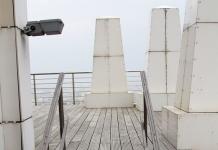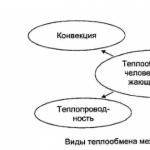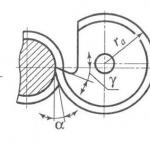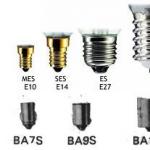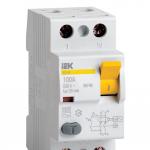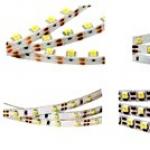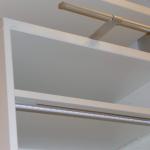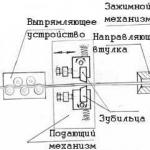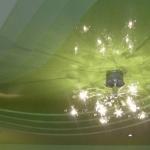In this article, you will see how to make a radio control for 10 commands with your own hands. The range of this device is 200 meters on the ground and more than 400 meters in the air.
The scheme was taken from the site vrtp.ru
Transmitter
Receiver
The buttons can be pressed in any sequence, although everything works stably at once. With it, you can control various loads: garage doors, lights, aircraft models, cars, and so on ... In general, anything, it all depends on your imagination.
To work, we need a list of parts:
1) PIC16F628A-2 pcs (microcontroller) (link to aliexpress) pic16f628a
)
2) MRF49XA-2 pcs (radio transmitter) (link to aliexpress) MRF49 XA
)
3) Inductor 47nH (or wind it yourself) - 6pcs
Capacitors:
4) 33uF (electrolytic) - 2 pcs
5) 0.1UF-6pcs
6) 4.7 pF-4 pcs
7) 18 pF-2 pcs
Resistors
8) 100 ohm-1pc
9) 560 ohm - 10 pcs
10) 1 set - 3 pieces
11) 1 LED
12) buttons - 10 pcs
13) Quartz 10MHz-2 pcs
14) Textolite
15) Soldering iron
As you can see, the device consists of a minimum of parts and is within the power of everyone. You just have to want. The device is very stable, after assembly it works immediately. The circuit can be done as on a printed circuit board. So and hinged mounting (especially for the first time, it will be easier to program). First, we make a payment. Print out
And we charge a fee.
We solder all the components, it is better to solder the PIC16F628A last, since it will still need to be programmed. Solder the MRF49XA first.
The main thing is very neat, she has very subtle conclusions. Capacitors for clarity. The most important thing is not to confuse the poles on the 33 microfarad capacitor, since it has different conclusions, one +, the other -. Solder all other capacitors as you wish, they have no polarity on the terminals
Coils can be used purchased 47nH but it is better to wind it yourself, they are all the same (6 turns of 0.4 wire on a 2 mm mandrel)
When everything is soldered, we check everything well. Next, we take PIC16F628A, it needs to be programmed. I used PIC KIT 2 lite and a homemade socket
Here is the link to the programmer Pic Kit2 )
Here is the wiring diagram
It's all simple, so don't be intimidated. For those who are far from electronics, I advise you not to start with SMD components, but to buy everything in DIP size. I did it myself for the first time
And it really worked the first time.
Open the program, select our microcontroller
Dear 4uvak, I collected this miracle on 4 channels the other day. I used the FS1000A radio module, of course everything works as it is written, except for the range, but I think this radio module is simply not a fountain, that's why it costs $ 1.5.
But I assembled it in order to tie it to broadlink rm2 pro and then I didn’t succeed. Broadlink rm2 pro saw it, read its command and saved it, but when it sends a command to the decoder, the latter does not react in any way. Broadlink rm2 pro is designed according to the declared characteristics to work in the range of 315/433 MHz, but it did not accept this miracle into its ranks. This was followed by dancing with a tambourine ..... Broadlink rm2 pro has a function as a timer for several commands and I decided to set broadlink rm2 pro a task to send the same command several times with an interval of 0 seconds, BUT !!! Having written down one command, he refused to write further, arguing that there is no more space in memory to save commands. Next, I tried to do the same operation with the commands from the TV and he recorded 5 commands without problems. From this I concluded that in the program you wrote, the commands sent by the encoder to the decoder are very informative and large in volume.
I am an absolute zero in MK programming and your project is the first assembled and working remote control in my life. I have never been friends with radio equipment and my profession is far from electronics.
Now the question is:
If, nevertheless, as I believe, the signal sent by the encoder is long and large, then you can make it as scanty as possible ???, with the same base, so as not to change the MK binding and the circuit.
I understand that any unpaid work is considered slavery :))))))), and therefore I am ready to pay for your work. Of course, I don’t know how much it will cost, but I think the price will be adequate for the work done. I wanted to transfer money to you, but where it was written, it was in rubles and it was not clear where to send it. I am not a resident of the Russian Federation and I live in Kyrgyzstan. I have master card $. If there is an option to send you money to your card, that will be fine. In rubles, I don't even know how to do it. There may be other easy options.
I thought of this because after I bought broadlink rm2 pro I connected a TV and an air conditioner for free, but the rest of our radio stuff is somehow not cheap. There are 19 light switches in the house, 3-4-5 per room, and it is very expensive to buy for everything. Yes, and I would like to remake the sockets on the control, otherwise what kind of smart home is this.
In general, my task is to make remotes with my own hands, so that they do not confuse each other and, most importantly, that broadlink rm2 pro understands them. At the moment, he does not understand the remote control according to your scheme.
In the discussion, I could not write, only registered users write there.
Waiting for your reply.
Blaze
10 command radio control on MRF49XA.
The design was created on relatively new and inexpensive microcircuits MRF49XA.
One is used in the receiving part, the other in the transmitting part.
Transmitter circuit.

Consists of a control controller and a transceiver MRF49XA.
Receiver circuit.

It is assembled from the same elements as the transmitter. In practice, the difference between the receiver and the transmitter (not taking into account the LEDs and buttons) is only in the software part.
MRF49XA- a small-sized transceiver that can work in
three frequency ranges.
Low frequency range: 430.24 - 439.75 MHz(step 2.5 kHz) .
High frequency band A: 860.48 - 879.51 MHz(step 5 kHz) .
High frequency range B: 900.72 - 929.27 MHz(step 7.5 kHz) .
The range limits are indicated subject to the use of reference quartz with a frequency of 10 MHz,
provided by the manufacturer. With 11 MHz reference quartz, the devices normally worked at a frequency of 481 MHz. Detailed studies on the maximum “tightening” of the frequency relative to those declared by the manufacturer were not carried out. MRF49XA mention of reduced phase noise, one way to achieve this is to narrow the tuning range of the VCO.
The devices have the following specifications.
Transmitter.
Power - 10 mW.
up to 5 volts).
The current consumed in the transmission mode is 25 mA.
The quiescent current is 25 μA.
Data rate - 1kbps.
An integer number of data packets is always transmitted.
FSK modulation.
Noise-immune coding, checksum transmission.
Receiver.
Sensitivity - 0.7 μV.
Supply voltage 2.2 - 3.8 V (according to the datasheet for ms, in practice it works fine
up to 5 volts).
Constant current consumption - 12 mA.
Data rate up to 2 kbps. Limited by software.
FSK modulation.
Noise-immune coding, checksum calculation upon reception.
Work algorithm.
Possibility of pressing in any combination of any number of transmitter buttons at the same time. The receiver will then display the pressed buttons in real mode with LEDs. Simply put, while a button (or combination of buttons) on the transmitting part is pressed, the corresponding LED (or combination of LEDs) is lit on the receiving part.
The button (or combination of buttons) is released - the corresponding LEDs go out immediately.
Test mode.
Both the receiver and the transmitter, upon supplying power to them, enter the test mode for 3 seconds.
Both the receiver and the transmitter are switched on to transmit the carrier frequency programmed in EEPROM for 1 second 2 times with a pause of 1 second (transmission is turned off during the pause). This is useful when programming devices. Then both devices are ready to go.
Controller programming.
EEPROM of the transmitter controller.
The top line of the EEPROM after flashing and powering up the transmitter controller will look like this ...
98 F0 - (maximum transmitter power, deviation 240 kHz) - Tx Config RG
82 39 - (transmitter on) - Pow Management RG .
10 h) is an identifier.
Default here FF. The identifier can be anything within a byte (0 ... FF) . This is the individual number (code) of the remote control.
At the same address in the memory of the receiver's controller is its identifier. They must match. This makes it possible to create different receiver/transmitter pairs.
EEPROM of the receiver controller.
All EEPROM settings mentioned below will be automatically written to their places upon supply to the power controller after it is flashed.
In each of the cells, the data can be changed at your discretion. If any cell used for data (other than the identifier) is entered with FF , the next time the power is turned on, that cell will immediately be overwritten with the default data.
The top line of the EEPROM after flashing and powering up the receiver controller will look like this...

80 1F - (subband 4xx MHz) - Config RG
AC 80 - (exact frequency value 438 MHz) - Freg Setting RG
91 20 - (receiver bandwidth 400 kHz, maximum sensitivity) - Rx Config RG
C6 94 - (data rate - no faster than 2 kbps) - Data Rate RG
C4 00 - (AFC off) - AFG RG
82 D9 - (receiver on) - Pow Management RG.
The first memory cell of the second row (address 10 h) - receiver identifier.
To correctly change the contents of the registers of both the receiver and the transmitter, use the program RFICDA by selecting a chip TRC102 (this is a clone of MRF49XA).
Notes.
In the photo of the transmitter, the track of the positive power bus of the controller was cut and duplicated with a wire. This is done to prevent a short circuit through the metal housings of the buttons (this was not taken into account during the design).
The reverse side of the boards is a solid mass (tinned foil).
Range of confident work in conditions of direct visibility - 200 m.
The number of turns of coils prm and prd - 6. If you use an 11 MHz reference crystal instead of 10 MHz, the frequency will "go" above about 40 MHz. The maximum power and sensitivity in this case will be at 5 turns of the pr and pr circuits.
The firmware is free to download, without any restrictions. Any copyright - with a mandatory link to website.
What I want to say on my own is an excellent solution in any situation of remote control. First of all, this applies to situations where there is a need to manage a large number of devices at a distance. Even if you don’t need to manage a large number of loads at a distance, it’s worth doing the development, since the design is not complicated! A pair of not rare components is a microcontroller PIC16F628A and microchip MRF49XA- transceiver.
A wonderful development has been languishing on the Internet for a long time and is overgrown with positive reviews. It was named after its creator (10 command radio control on mrf49xa from blaze) and is located at -
Below is the article:
Transmitter circuit:
 Consists of a control controller and a transceiver MRF49XA.
Consists of a control controller and a transceiver MRF49XA.
Receiver Circuit:
 The receiver circuit consists of the same elements as the transmitter. In practice, the difference between the receiver and the transmitter (not taking into account the LEDs and buttons) is only in the software part.
The receiver circuit consists of the same elements as the transmitter. In practice, the difference between the receiver and the transmitter (not taking into account the LEDs and buttons) is only in the software part.
A little about microchips:
MRF49XA- a small-sized transceiver with the ability to operate in three frequency bands.
1. Low frequency range: 430.24 - 439.75 MHz(step 2.5 kHz).
2. High frequency band A: 860.48 - 879.51 MHz(step 5 kHz).
3. High frequency range B: 900.72 - 929.27 MHz(step 7.5 kHz).
The range limits are specified under the condition of using a reference quartz with a frequency of 10 MHz, provided by the manufacturer. With reference quartz 11 MHz devices normally worked at a frequency of 481 MHz. Detailed studies on the topic of the maximum “tightening” of the frequency relative to the one declared by the manufacturer have not been carried out. Presumably, it may not be as wide as in the TXC101 chip, since in the datasheet MRF49XA mention of reduced phase noise, one way to achieve this is to narrow the tuning range of the VCO.
The devices have the following specifications:
Transmitter.
Power - 10 mW.
The current consumed in the transmission mode is 25 mA.
The quiescent current is 25 μA.
The data rate is 1kbps.
An integer number of data packets is always transmitted.
FSK modulation.
Noise-immune coding, checksum transmission.
Receiver.
Sensitivity - 0.7 μV.
Supply voltage - 2.2 - 3.8 V (according to the datasheet for ms, in practice it normally works up to 5 volts).
Constant current consumption - 12 mA.
Data rate up to 2 kbps. Limited by software.
FSK modulation.
Noise-immune coding, checksum calculation upon reception.
Work algorithm.
Possibility of pressing in any combination of any number of transmitter buttons at the same time. The receiver will then display the pressed buttons in real mode with LEDs. In simpler terms, while a button (or combination of buttons) on the transmitting part is pressed, the corresponding LED (or combination of LEDs) is lit on the receiving part.
The button (or combination of buttons) is released - the corresponding LEDs go out immediately.
Test mode.
Both the receiver and the transmitter, upon supplying power to them, enter the test mode for 3 seconds. Both the receiver and the transmitter are switched on to transmit the carrier frequency programmed in the EEPROM for 1 second 2 times with a pause of 1 second (transmission is turned off during the pause). This is useful when programming devices. Then both devices are ready to go.
Controller programming.
EEPROM of the transmitter controller.
The top line of the EEPROM after flashing and powering up the transmitter controller will look like this ...
 80 1F - (subband 4xx MHz) - Config RG
80 1F - (subband 4xx MHz) - Config RG
AC 80 - (exact frequency value 438 MHz) - Freg Setting RG
98 F0 - (maximum transmitter power, deviation 240 kHz) - Tx Config RG
82 39 - (transmitter on) - Pow Management RG .
The first memory cell of the second row (address 10 h) is an identifier. Default here FF. The identifier can be any within a byte (0 ... FF). This is the individual number (code) of the remote control. At the same address in the memory of the receiver's controller is its identifier. They must match. This makes it possible to create different receiver/transmitter pairs.
EEPROM of the receiver controller.
All EEPROM settings mentioned below will be automatically written to their places upon power supply to the controller after its firmware.
In each of the cells, the data can be changed at your discretion. If any cell used for data (other than ID) is entered with FF, the cell will immediately be overwritten with default data on the next power-up.
The top line of the EEPROM after flashing and powering up the receiver controller will look like this ...
 80 1F - (subband 4xx MHz) - Config RG
80 1F - (subband 4xx MHz) - Config RG
AC 80 - (exact frequency value 438 MHz) - Freg Setting RG
91 20 - (receiver bandwidth 400 kHz, maximum sensitivity) - Rx Config RG
C6 94 - (data rate - no faster than 2 kbps) - Data Rate RG
C4 00 - (AFC off) - AFG RG
82 D9 - (receiver on) - Pow Management RG.
The first memory cell of the second row (address 10 h) is the receiver ID.
To correctly change the contents of the registers of both the receiver and the transmitter, use the program RFICDA by selecting a chip TRC102 (this is a clone of MRF49XA).
Notes.
The reverse side of the boards is a solid mass (tinned foil).
The range of reliable work in line of sight conditions is 200 m.
The number of turns of the receiver and transmitter coils is 6. If you use an 11 MHz reference crystal instead of 10 MHz, the frequency will "go" above about 40 MHz. The maximum power and sensitivity in this case will be at 5 turns of the receiver and transmitter circuits.
My implementation
At the time of the implementation of the device, a wonderful camera was at hand, so the process of manufacturing the board and mounting parts on the board turned out to be more exciting than ever. And this is what it led to:
The first step is to make a printed circuit board. To do this, I tried to dwell on the process of its manufacture in as much detail as possible.
We cut out the required size of the board. We see that there are oxides - we need to get rid of them. The thickness is 1.5 mm.
The next step is cleaning the surface, for this it is worth picking up the necessary equipment, namely:
1. Acetone;
2. Sandpaper (zero);
3. Eraser (eraser)
4. Means for cleaning rosin, flux, oxides.
Acetone and means for washing and cleaning contacts from oxides and experimental board
The cleaning process takes place as shown in the photo:
 We clean the surface of the fiberglass with sandpaper. Since it is two-sided, we do everything on both sides.
We clean the surface of the fiberglass with sandpaper. Since it is two-sided, we do everything on both sides.
 We take acetone and degrease the surface + wash off the remnants of the sandpaper crumbs.
We take acetone and degrease the surface + wash off the remnants of the sandpaper crumbs.
 And voila - a clean board, you can apply a signet with a laser-ironing method. But for this you need a seal 🙂
And voila - a clean board, you can apply a signet with a laser-ironing method. But for this you need a seal 🙂
Cut out from the total amount Cut off the excess
We take the cut-out seals of the receiver and transmitter and apply them to the fiberglass as follows:
Type of seal on fiberglass
 Flipping
Flipping
 We take the iron and warm up the whole thing evenly, until the imprint of the tracks appears on the reverse side. IMPORTANT NOT TO OVERHEAT!Otherwise, the toner will float! Hold for 30-40 sec. We evenly stroke the difficult and poorly heated places of the seal. The result of a good transfer of toner to fiberglass is the appearance of an imprint of tracks.
We take the iron and warm up the whole thing evenly, until the imprint of the tracks appears on the reverse side. IMPORTANT NOT TO OVERHEAT!Otherwise, the toner will float! Hold for 30-40 sec. We evenly stroke the difficult and poorly heated places of the seal. The result of a good transfer of toner to fiberglass is the appearance of an imprint of tracks.
Smooth and weighty base of the iron We apply a heated iron to the signet
We press the seal and translate.
This is what the finished printed print looks like on the second side of magazine glossy paper. The tracks should be visible approximately as in the photo:

We do a similar process with the second signet, which in your case can be either a receiver or a transmitter. I placed everything on one piece of fiberglass

Everything must cool down. Then gently remove the paper with your finger under running water. We roll it with our fingers with slightly warm water.
Roll up the paper under lukewarm water with your fingers Cleaning result
Not all paper can be removed this way. When the board dries, there is a white “coat” left that, when etched, can create some unetched areas between the tracks. The distance is small.

Therefore, we take thin tweezers or a gypsy needle and remove the excess. The photo looks great!

In addition to the remnants of paper, the photo shows how, as a result of overheating, the contact pads for the microcircuit stuck together in some places. They need to be carefully, with the same needle, as carefully as possible to separate (scrape off part of the toner) between the contact pads.
When everything is ready, we move on to the next step - etching.
Since we have double-sided fiberglass and the reverse side is a solid mass, we need to save copper foil there. For this purpose, we will seal it with tape.
Adhesive tape and protected board The second side is protected from etching with a layer of adhesive tape
Now we poison the board. I do it the old fashioned way. I dilute 1 part of ferric chloride to 3 parts of water. The whole solution is in the jar. Store and use conveniently. I heat it up in the microwave.

Each board was etched separately. Now we pick up the “zero” already familiar to us and clean the toner on the board
Many wanted to assemble a simple radio control circuit, but so that it was multifunctional and for a sufficiently long distance. I still put together this scheme, having spent almost a month on it. I drew the tracks on the boards by hand, since the printer does not print such thin ones. In the photo of the receiver, there are LEDs with uncut leads - I soldered them only to demonstrate the operation of the radio control. In the future, I will unsolder them and assemble a radio-controlled aircraft.
The radio control equipment circuit consists of only two microcircuits: the MRF49XA transceiver and the PIC16F628A microcontroller. The parts are in principle available, but for me the problem was the transceiver, I had to order it via the Internet. and download the board here. More about the device:
The MRF49XA is a compact transceiver capable of operating in three frequency bands.
- Low frequency range: 430.24 - 439.75 MHz (2.5 kHz step).
- High-frequency range A: 860.48 - 879.51 MHz (5 kHz step).
- High frequency range B: 900.72 - 929.27 MHz (7.5 kHz step).
The range limits are specified subject to the use of reference quartz with a frequency of 10 MHz.
Schematic diagram of the transmitter:


There are quite a few details in the TX circuit. And it is very stable, moreover, it does not even require configuration, it works immediately after assembly. The distance (according to the source) is about 200 meters.


Now to the receiver. The RX block is made in a similar way, the only differences are in the LEDs, firmware and buttons. Parameters of 10 command radio control unit:
Transmitter:
Power - 10 mW
Supply voltage 2.2 - 3.8 V (according to the datasheet for m / s, in practice it normally works up to 5 volts).
The current consumed in the transmission mode is 25 mA.
The quiescent current is 25 μA.
Data rate - 1kbps.
An integer number of data packets is always transmitted.
Modulation - FSK.
Noise-immune coding, checksum transmission.
Receiver:
Sensitivity - 0.7 μV.
Supply voltage 2.2 - 3.8 V (according to the datasheet on the microcircuit, in practice it normally works up to 5 volts).
Constant current consumption - 12 mA.
Data rate up to 2 kbps. Limited by software.
Modulation - FSK.
Noise-immune coding, checksum calculation upon reception.

Advantages of this scheme
Possibility of pressing in any combination of any number of transmitter buttons at the same time. The receiver will then display the pressed buttons in real mode with LEDs. In simpler terms, while a button (or combination of buttons) on the transmitting part is pressed, the corresponding LED (or combination of LEDs) is lit on the receiving part.
When power is applied to the receiver and transmitter, they go into test mode for 3 seconds. At this time, nothing works, after 3 seconds both circuits are ready to work.
The button (or combination of buttons) is released - the corresponding LEDs go out immediately. Ideal for radio control of various toys - boats, planes, cars. Or it can be used as a remote control unit for various actuators in production.

On the printed circuit board of the transmitter, the buttons are located in one row, but I decided to assemble something like a remote control on a separate board.

Both modules are powered by 3.7V batteries. At the receiver, which consumes noticeably less current, the battery is from an electronic cigarette, at the transmitter - from my favorite phone)) I assembled and tested the circuit found on the vrtp website: [)eNiS
Discuss the article RADIO CONTROL ON THE MICROCONTROLLER

